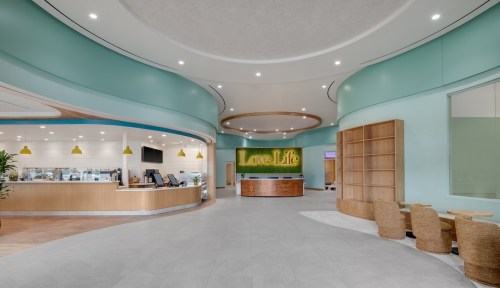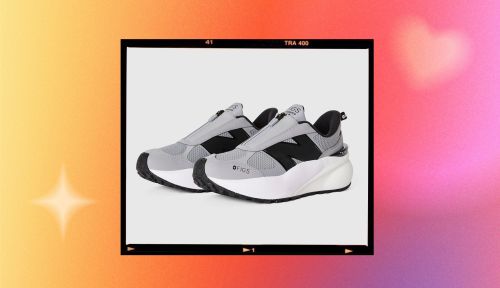If you’re the sort of person who has a “care team”—you know, doctors, physical therapists, a personal trainer, maybe a masseuse or two—wouldn’t it be nice if they could all communicate with each other to know what’s going on with your health, and were all part of the same seamless organization, digitally and IRL?
That’s what the original co-founder and former CEO of Whole Foods, John Mackey, is betting people will pay big bucks for with his latest venture: a health, fitness, and wellness members club called Love.Life. Like, $50,000 per year big.
Love.Life opened the doors to its 45,000 square foot wellness space in El Segundo, California, on Saturday, and I got to tour the space and try out some of the high-tech recovery and fitness tech.
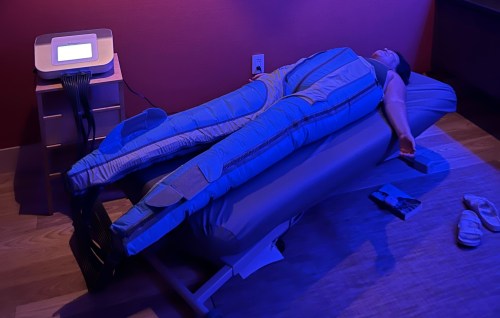
The El Segundo location, which is in the South Bay area of Los Angeles, is set to be the flagship of multiple locations in California and Texas. The idea is that Love.Life is your gym, your physical therapist’s office, your wellness and recovery space, your local café, and even your primary care doctor’s office.
Health and wellness clinics, clubs, and digital services have been all the rage of late: Equinox recently launched a $40,000 per year membership called Optimize by Equinox that combines personal training with medical testing, so your trainer (and nutritionist) can be informed on a host of stats about your body. Ultra-luxurious recovery clubs like Remedy Place, community-focused gyms like Heimat, precision medicine clinics (that aim to prevent disease and slow aging) like Chi Longevity, and subscription services that give you fitness, nutrition, and supplement plans based on blood, DNA, and even stool analysis, like Lifeforce, are all enjoying a boom.
Still, a comprehensive combo of all of the above with a physical location has yet to break through to the mainstream, which is where Love.Life hopes to come in. Can Mackey tap into—and help spur a boom in—holistic longevity care today with Love.Life, the way he did with organic food and healthy eating over the last half century with Whole Foods?

Health and wellness under one (huge) roof
The scale of the Love.Life flagship cannot be overstated, and it’s part of how Love.Life is attempting to reach that north star of fully integrated health and wellness care—by literally housing it all under one roof. The location, I’m told, used to be a Best Buy.
The lobby has a cafe stocked with bone broth, protein balls, functional beverages, and other “clean ingredient” foods (it comes from the founder of Whole Foods, after all). Plus, there’s plenty of space to enjoy your meal or get some work done. I got to sip on an adaptogenic smoothie during my tour, though I did not personally sample “John’s Daily Perfect Smoothie,” which was very heavy on the leafy greens.
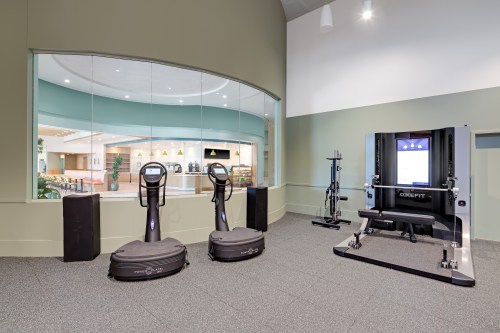
The fitness wing has multiple group fitness studios plus a full-size gym with truly cutting edge fitness machines. I tried and failed to keep my balance on the iMoove 600, which is basically a motorized Bosu ball. One machine, called the Oxefit, will even give you form corrections, act as a spotter, and send your lifting stats to your trainer (“like a Tonal on steroids,” says Love.Life’s manager). Located right off the gym is a physical therapist’s office.
Oh yeah, and there are indoor pickleball courts.
There’s also a cryotherapy chamber in the entrance to the fitness wing, so you can get some ice cold energy before hitting the weights (and get pumped up by your gym buddies). Hyperbaric oxygen chambers and a PEMF table are also located off the lobby. But an entire co-ed “Recovery” wing houses a row of cold plunge baths, a circle of zero gravity chairs, a heated Hammam table, a steam room, a communal sauna, multiple individual-sized infrared saunas, plus single-sex locker rooms.
Those are just the communal areas: Multiple rooms for therapies like massage, acupuncture, and more, a room for lymphatic compression massage suit sessions, and a red light bed are also on offer. I opted to try the red light bed, where I fell asleep, and the compression suit. Can confirm: getting squeezed all over does indeed feel great.
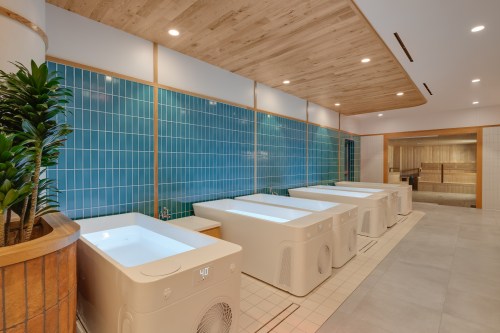
The final wing contains the doctors offices, anchored by a DEXA scan machine, which will give you readings on bone density and body composition (how much muscle and fat you have).
Love.Life is designed to be your primary care practice: It has two doctors, a functional medicine physician and an integrative physician, on staff. But the medical operation—and the Love.Life care model as a whole— is all oriented toward using biometric data from the DEXA scan, your wearable device, fitness assessments, and a suite of blood and other tests to optimize your “healthspan.”
Healthspan is an idea from the world of preventative medicine, also known as longevity medicine, which uses health intel like certain hormone or nutrient levels to ostensibly reveal what conditions you may be predisposed to, in order to tailor your diet, workout regimen, supplements, prescriptions, and other lifestyle factors, to prevent disease onset, and even normal signs of aging. The field is controversial but popular among the billionaire entrepreneur and investor set, including Mackey, who wrote a book about eating for longevity.

So if you have a medical Love.Life membership, you’ll take a suite of these tests in the medical wing, plus a VO2 max, metabolic rate, and strength tests in the fitness wing. Then your physical therapist and trainer will be read in on your blood pressure, your “biological age,” your genetic predispositions for disease and aging. All of the info will live in an app, where all of your team can see your latest stats, and how they change over time in concert with your fitness, wellness, nutrition, and health regimes that you do at the club, and as recorded in your wearable of choice.
And don’t forget, you can do red light therapy to promote tissue recovery, medical-grade compression suit sessions to stimulate lymphatic drainage, IV bags filled with vitamins and electrolytes, and a litany of other “treatments” to support your wellness. Not to mention hit the gym (or pickleball court).
The $$ of it all
If you’re into longevity medicine, Love.Life sounds great. You can get what seems to be every biometric datapoint under the sun in the same place where you get smoothies, do deadlifts, and cold plunge, and your whole healthcare team is on the same digital page. It’s a health and wellness superstore—with a price. Just a fitness and spa membership (no medical tests) will run you $300/month, $750/month covers a basic medical membership (plus thousands of dollars worth of available add ons), or you can pay $50,000 annually for the “concierge” membership, which has unlimited doctor visits and the most comprehensive test panel—and free pickleball. With the other memberships, you’ll pay an extra $100/month for access to those coveted courts.
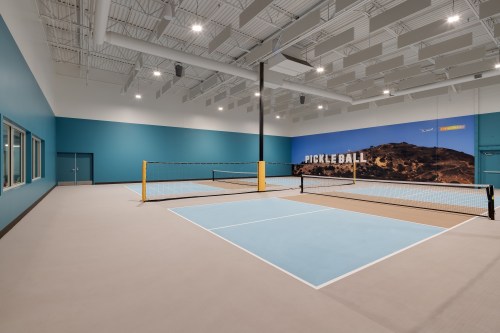
Having transparent and ready access to your healthcare team in the same place, physically and digitally, does sound like a dream. It’s unfortunate that the dream is only available if you’re willing to pay top dollar for it. And a pricey new health and wellness club actually makes ironic sense coming from Mackey, who is a notorious opponent of universal healthcare (instead, he advocates that people should eat better diets and exercise more with the goal of not actually needing healthcare).
Does your trainer really need to know the details of your gut microbiome? Does your doctor need intel on how much you can deadlift? How much does advice on how to be in good health really vary beyond “get regular exercise and eat a nutrient-rich diet of unprocessed foods” from person to person? Love.Life currently has 40 members—we’ll see how many more people think the answers to those questions are “yes” and “a lot,” and are willing to pony up the cash, from there.
Sign Up for Our Daily Newsletter
Get all the latest in wellness, trends, food, fitness, beauty, and more delivered right to your inbox.
Got it, you've been added to our email list.
